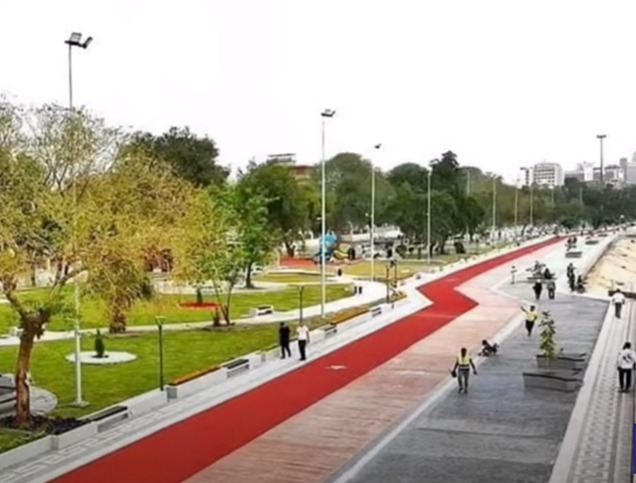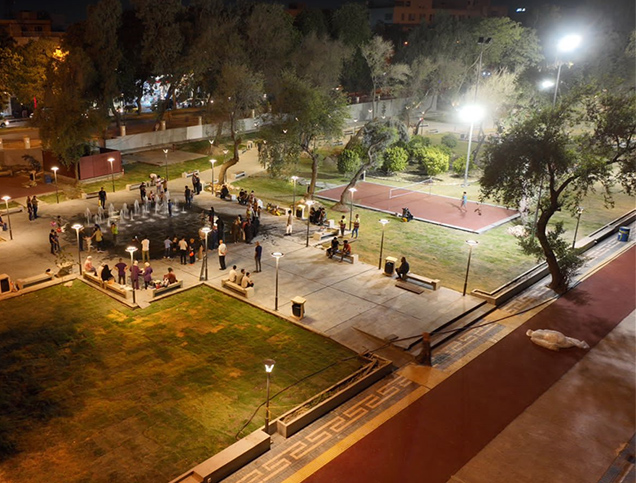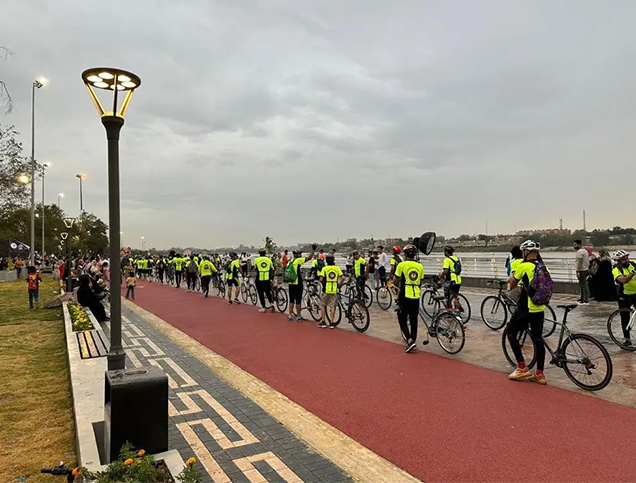
Close

Approach Words: Inclusive City, Sustainability, Urban Livability
Public Policy Instruments: Physical Intervention, Planning, Regulatory
The redevelopment project of Abu Nawas Corniche is a dual-faceted initiative, comprising the rehabilitation of the old corniche and the construction of an additional segment forming a new corniche.1 The old corniche, a waterfront park established in 1980 along the banks of the Tigris, spans approximately 10 kilometers from the Sinak Bridge to the Al-Ahrar Bridge.2 Complementing this, the new corniche extends for 2.5 kilometers, serving as a model waterfront project for Baghdad.3
This redevelopment project is part of the “Baghdad Ajmal”i campaign launched by the Prime Minister to enhance the capital’s public services and aesthetics.4 The project aims to transform the corniche into a recreational space for Baghdad residents and a tourist destination for visitors to the city.5

Title: Construction Works at Abu Nawas Corniche in the First Phase of the Project.
Source: Click Here

Title: Abu Nawas Corniche Under Rehabilitation in Phase 2.
Source: Click Here

Title: Abu Nawas Corniche After Launching of Second Phase.
Source: Click Here

Title: Baghdad Cycling Team Marathon on Abu Nawas Corniche.
Source: Click Here
The redevelopment of Abu Nawas Corniche encompasses establishing a range of public spaces and amenities, including recreational and leisure areas such as gardens, sports fields, restaurants, and cafes. The project incorporates lanes dedicated to running, walking, and cycling.6 The main pathways along the corniche, situated on both sides of the river, feature relaxing seating areas, providing visual access to the river.7 As such, this initiative is divided into two main aspects: rehabilitation of existing infrastructure and development of new areas forming “the new corniche”.
In terms of rehabilitation, it includes the following implemented features:
The development features include the following:

Owner/Developer (Public)

Contractor/Implementer
The corniche’s public and recreational areas attract visitors, particularly individuals from surrounding neighborhoods, local residents, and families, by offering a variety of engaging social events and activities.23 For example, shortly after its reopening in its new design, the Abu Nuwas Corniche hosted a series of sporting and musical events, including a notable marathon by the Baghdad Cycling Team.24 It is worth noting that the urban design of the corniche adheres to universal building code requirements for accessibility.25 Additionally, the corniche will host recreational activities and games specifically designed for people with disabilities.26
The Mayoralty of Baghdad initiated and implemented the Abu Nawas Corniche project between February and June 202327 28 with a total cost exceeding $6 million.29 The project was implemented in two main phases. The first phase, completed in April 2023,30 focused on rehabilitating and expanding the road, cleaning the river,31 and constructing the initial 0.5 kilometers of the corniche.32 The second phase, implemented in June, involved planting 0.01 square kilometers of green spaces, developing various recreational areas, installing a ground fountain,33 and completing an additional 0.6 kilometers of the corniche.34
Project Link
Endnotes
References